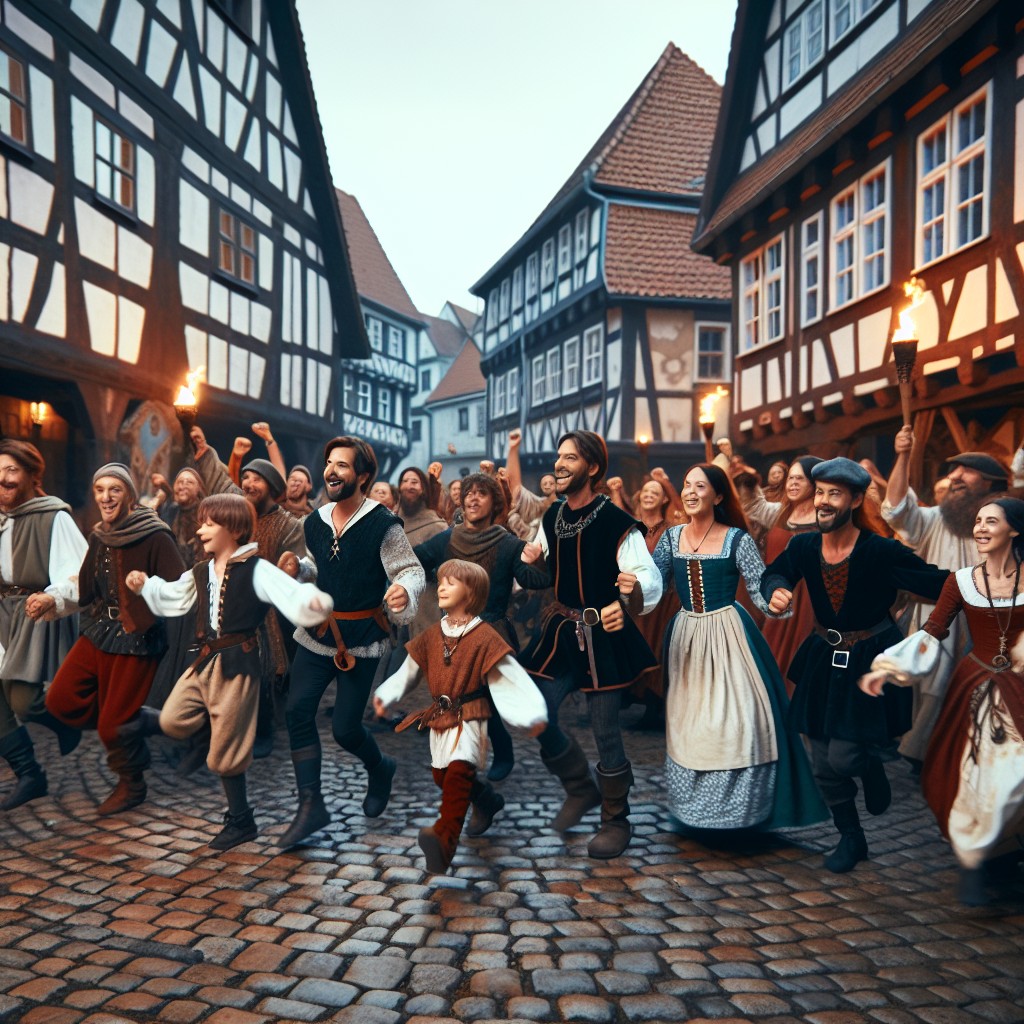The dancing plague of 1518
A mass hysteria in Renaissance Europe

A group of people dancing in the streets of Strasbourg - AI-generated image
The so-called "Dancing Plague" was a bizarre and inexplicable event that took place in Strasbourg, within the Holy Roman Empire, in 1518. It all began in the aforementioned town when a woman named Troffea suddenly started dancing energetically in the streets for no apparent reason. Authorities who witnessed the scene immediately realized that this was not a traditional dance but rather a series of erratic, frenzied, and uncoordinated limb movements—seemingly without any logic.
As if that weren’t strange enough, what started as an isolated case quickly escalated, with nearly 100 people joining Troffea in her dancing. According to official reports, the group continued this uncontrollable movement for an entire week. Believing that this "dancing fever," as it was later called, would soon subside, authorities even went so far as to set up a stage in the main square of Strasbourg, complete with musicians and choreographers to guide the impromptu dancers. However, things did not go as planned.
The people simply would not stop dancing. Their intense, ceaseless movements led to exhaustion, with the weakest among them collapsing from heart attacks or sheer fatigue, some even dying within days. Meanwhile, more individuals joined in, eventually reaching a total of 400 participants. The city’s authorities were thrown into chaos, unable to stop the afflicted, as if they were trapped in a state of collective trance.
As the days passed and the death toll rose, Strasbourg officials decided to take drastic measures. The afflicted were forcibly removed from the city and taken to a hillside sanctuary dedicated to Saint Vitus, located in a nearby cave. There, in what was considered a purification ritual, they were brought before an effigy of Saint Vitus—the patron saint of dance—before being hospitalized in Strasbourg. Gradually, the afflicted stopped dancing.
The most widely accepted theories for this phenomenon, aside from the possibility of food poisoning causing involuntary movements, point to mass hysteria triggered by Troffea herself, potentially fueled by the difficult socio-economic conditions in Europe at the time. However, the true cause remains unknown to this day.
John Waller, A Time to Dance, A Time to Die: The Extraordinary Story of the Dancing Plague of 1518, Thriplow, Icon Books, 2008
2025-09-22
Salvatore Ciccarello
